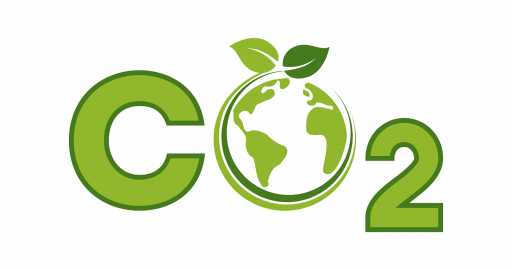Climate-friendly transports

Climate protection made simple:
Help to improve the lives of people who are particularly affected by the consequences of climate change with a small amount of effort.
Climate initiative 50/50: Join us!
With our sustainable initiative for climate friendly transports, we actively contribute to environmental protection as a sustainable company by bringing about an optimisation of the CO₂ balance.
Since 2020, our customers have had the option of having their transports carried out in a climate-neutral manner. What is special about this is that we pay half of the compensation costs – for every tonne of CO₂ produced. In this way, we are raising climate awareness in logistics and putting more climate-friendly transports on the road.
Join us and compensate together with us – 50/50!
And this is how it works:
The ecological footprint, the TCF (Transport Carbon Footprint) of all transports, has already been measured at Alpensped since 2012 and shown on every invoice. Now we go one step further and additionally show the expected amount of CO₂ compensation already in the offer. A correct final invoice for the transport order with the actual CO₂ emissions caused is then issued with the invoice. By the way, the respective TCF of the order is also listed on the invoice. Why don’t you take a look at it next time?
Accompanying this, you will receive a corresponding document from us as proof of compensation via First Climate’s Gold Standard project “Uganda: energy-efficient cooking stoves” selected by us.
Our carbon offset partner First Climate: Green by conviction
First Climate was founded in 1999 as a pioneer in mandatory and voluntary emissions trading. Since then, they have continuously expanded their offering. Today, they support companies and organisations on a broad basis to achieve their sustainability and environmental protection goals and to be successful with responsible action.
All projects offered are certified according to high quality standards such as the Verified Carbon Standard, the Climate, Community and Biodiversity Standard or the Gold Standard.
In addition to the reduction of CO₂ emissions, all First Climate projects generate multiple additional benefits for people and the environment. In this way, the projects enable a commitment in the sense of the UN’s Sustainable Development Goals (SDGs).

Support for the climate protection project „Uganda: energy-efficient cooking stoves“
As part of the compensation, we participate in the Gold Standard climate protection project „Uganda: energy-efficient cooking stoves“.
The purpose of the project is to promote and support the spread of energy-efficient cooking stoves in Uganda. The cooking stoves specially developed for the project are simple, but durable and effective. Compared to traditional open fires, the new metal cookstoves allow fuel savings of 35 to 50 percent. Starting in the Kampala metropolitan region, the project area is being successively expanded. To date, more than 600,000 efficient cooking stoves have been delivered to households in Uganda.
Apart from emission reduction, this project offers other benefits for the local people such as poverty reduction, health promotion, gender equality, better water supply, economic growth, emission prevention as well as the protection of the forest ecosystem.

We have all done nothing for too long. Let’s not wait until tomorrow. Let’s act NOW!
Therefore, we cordially invite you all to participate in this project and offset together with us – 50/50. You would be surprised how little it takes. You can find a calculation example right here.
Example calculation compensation: This is how much you would have to contribute
Did you know how affordable it is to make a transport climate-neutral?
Here is a small example: For a full load (24 tonnes) from Mannheim to Milan (approx. 600 km), the transport would already be climate-neutral with an additional amount of € 5.40 – we will pay the other half (€ 5.40).
Climate-neutral until 2030
Our goal is to achieve climate neutrality by 2030. This is our major challenge for the coming years.
The transports are responsible for the majority of our emissions and therefore have a high potential for improvement. Our administration has been climate-neutral since 2011, and since then we have also been offsetting part of our transport services through climate protection projects.
We want to reduce our corporate footprint by 50 per cent by 2027 and be completely climate-neutral by 2030.
We want to achieve this mainly by reducing our CO₂ emissions through the use of the latest generation of trucks, by bundling consignments and by training drivers in energy-efficient driving. The biggest lever of reduction is shifting transports from road to rail. From a CO₂ perspective, long routes are particularly suitable for this. Compared to pure road transport, around 45 percent CO₂ can be saved per rail transport. We only want to continue offsetting a smaller part of our emissions.
Find out more about our sustainable logistics.
How is the TCF calculated at Alpensped?
The TCF (Transport Carbon Footprint) refers to the shipment-related CO₂ footprint, namely the CO₂ emissions generated for a shipment.
The calculation is specified by the DIN EN ISO 14083:2024 standard, according to which we are certified to determine the TCF.
The footprint is calculated according to the type of handling (full or partial load) and has the load weight and the distance as variables. Empty and full consumption of the truck at complete capacity are deposited as default values. The emissions are calculated using the diesel consumption and the emission factor (CO₂ emissions per litre of diesel) determined by formula. The calculation is integrated into our transport management system.
The following parameters are therefore used to calculate the TCF:
- Empty consumption per 100 km
- Difference between full and empty consumption
- Loading capacity in to
- Empty mileage in %
- Load weight in to
- Distance in km
- Conversion factor in litres of diesel to CO₂ emissions
First, the diesel consumption is calculated using a formula with the parameters mentioned, and then the emissions are calculated using the conversion factor.
For the calculation, we include all emissions of the upstream chain, so the emissions that occur during the production of the diesel fuel.
What does the TCF resp. the CO₂ emission depend on?
As can be seen above, CO₂ emissions depend on the parameters of distance, load weight, consignment type (FTL/LTL), loading capacity of the vehicle as well as the consumption (full and empty).
In concrete terms, this means that a transport or consignment with less weight and a shorter distance emits less CO₂ than a heavier consignment with more kilometres driven. A partial load produces higher CO₂ emissions than a full load. Likewise, a mega-trailer, for example, has a larger loading capacity than a sprinter. The load price does not play a role here.
Definitions
What is CO₂ reduction?
What is CO₂ compensation?
What does climate neutrality mean?
Greenhouse gas neutrality is equated or used synonymously with climate neutrality by governments and companies. In this sense, the term describes that a company does not emit more greenhouse gases than can be absorbed by natural sinks (e.g. forests).
Climate neutrality can be achieved by purchasing compensation certificates. However, in order not to be vulnerable to greenwashing accusations, this should only be done after greenhouse gas emissions have been avoided and reduced. (Source: Klimavest)
What is CO₂ and how is it produced?
In the air, carbon dioxide is transparent to visible light but absorbs infrared radiation, acting as a greenhouse gas. It is a trace gas in Earth’s atmosphere by volume, having risen from pre-industrial levels. Burning fossil fuels is the primary cause of these increased CO₂ concentrations and also the primary cause of global warming and climate change. Carbon dioxide is soluble in water and is found in groundwater, lakes, ice caps, and seawater. When carbon dioxide dissolves in water it forms carbonic acid (H2CO3), which causes ocean acidification as atmospheric CO₂ levels increase.
As the source of available carbon in the carbon cycle, atmospheric carbon dioxide is the primary carbon source for life on Earth. Its concentration in Earth’s pre-industrial atmosphere since late in the Precambrian has been regulated by organisms and geological phenomena. Plants, algae and cyanobacteria use energy from sunlight to synthesize carbohydrates from carbon dioxide and water in a process called photosynthesis, which produces oxygen as a waste product. In turn, oxygen is consumed and CO₂ is released as waste by all aerobic organisms when they metabolize organic compounds to produce energy by respiration. CO₂ is released from organic materials when they decay or combust, such as in forest fires. Since plants require CO₂ for photosynthesis, and humans and animals depend on plants for food, CO₂ is necessary for the survival of life on earth. (Source: Wikipedia)
What is a Corporate Carbon Footprint (CCF)?
Direct emissions include, for example, those from the company’s own power plant or vehicle fleet, but also those caused by industrial processes (e.g. in cement or lime production).
Indirect emissions outside the company boundaries include, for example, travel by employees or customers, but also transport and others. (Source: GUT Cert)
What is a Transport Carbon Footprint (TCF)?
For the uniform calculation of the greenhouse gas emissions of the transport services of logistics companies (according to DIN EN ISO 14083:2024), the direct and indirect emissions are required. The sum of both results in the CO₂ emissions of the transport service.
The aim of certifying transport emissions according to DIN EN ISO 14083 is to uniformly balance the emissions of climate-damaging gases for the entire transport sector, to create transparency, to identify potential savings and to discover areas for action in order to reduce energy and raw material expenses. (Source: TÜV SÜD)
Your contact partner

+49 (0)621 844 08-80
+49 (0)621 844 08-80
Make your freight inquiry right here and receive a non-binding offer from us:
